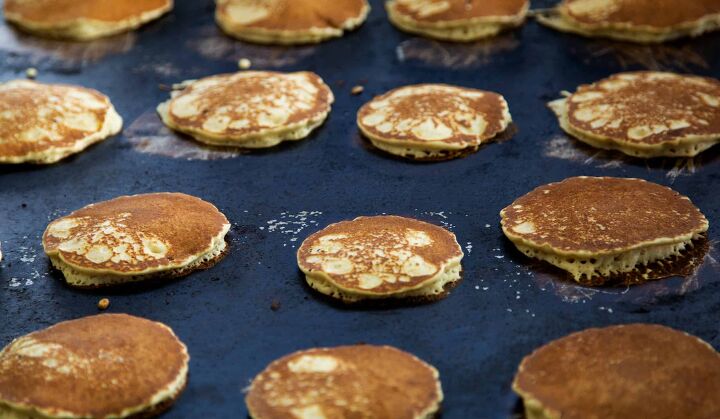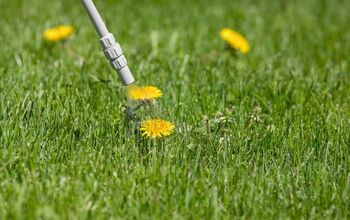How To Clean A Blackstone Griddle After Cooking

Sometimes there is just no alternative to cooking on a griddle. Whether you are cooking a meal for many or a meal for one, the griddle can provide a unique sear that other surfaces just can’t replicate. Whether it be a hash or creating the perfect melt, a Blackstone griddle can make for a fine kitchen accessory.
When it comes time to clean, however, it may not seem so great. The good news is that this how-to guide can walk you through the steps necessary for keeping your Blackstone griddle clean and free of debris and old food. When you keep your griddle clean, it will be ready to go for your next meal and won’t have an impact on your other meals.
To clean your Blackstone griddle after cooking, begin by turning it off and pouring some water over it while it is still warm. Once the griddle has cooled down, use a scraper or metal spatula to scrape off excess food. Use a paper towel to wipe off the scrapes. Finish by seasoning with any vegetable oil.
Do You Need a Maid Service?
Get free, zero-commitment quotes from pro maid service near you.

Cleaning A Blackstone Griddle
Step 1: Remove Stuck on Food
No matter what you do, it seems like there are some more determined bits of food. Even with all the elbow grease in the world, those stuck-on food stains may be more stubborn than you are and refuse to come up.
For stuck-on food, try pouring some water onto the griddle while it is still warm. Keep in mind that you don’t want it to be scalding hot; it will simply burn up the water and cause it to evaporate into the air before it can work against those food stains.
The purpose here is that the hot water makes it a little bit easier to get that hard residue up. You may have to do it more than once for particularly difficult stains, but it should at least loosen those stains up enough that you’ll be able to clean them.
Step 2: Scrape
The good thing about keeping a Blackstone griddle clean is that it is relatively easy to clean so long as you haven’t let months pass between cleanings. Make sure that the griddle is turned off (unplug it to be extra safe) and cool down right after cooking. The last thing that you want is to burn yourself during the cleaning process.
When the surface has cooled, scrape up the old foodstuff using either a scraper or a metal spatula. That hard edge should work well to get any old food scraps up from the surface of the grill. Don’t worry about the very small bits, the other steps are meant to get that stuff off later on. Just make sure that the bulk of the food bits have been scraped up before moving forward.
Step 3: A Quick Wipe
After you have scraped up the excess food, now comes time to pre-wipe. All you need is a wet paper towel. You can use a dishcloth if you want, but that can get the cloth quite greasy and will facilitate the need to put it in the wash. Paper towels you can simply use and throw out.
The purpose here is to get those loose food scraps removed from the surface of the griddle completely. Some will come up and stick to your scraper during that step, but the rest will require wiping down to get rid of.
Step 4: Using a Scrubbing Pad
You can purchase these scouring pads directly from Blackstone, but a fine Brillo pad should also work just as well. The fineness of the pads should work to scrape up the leftover food bits from the surface of the griddle.
The reason why it has to be fine is that you don’t want to scratch up the surface of the griddle. Using a wire brush is a bad idea, for instance, because the bristles are too tough and harsh, scratching up the surface of the griddle as it cleans.
Step 5: Rinse and Wipe
Now comes time to rinse off the water and food scraps, wiping it away with paper towels. You can simply wet the paper towels if you want to save a step, but this is what will ultimately pick up the bulk of the debris now sitting on the surface of the griddle.
When the bulk of the water has been removed from the surface of the griddle, take a dry cloth and gently wipe the entire surface of the griddle. This will remove any moisture that may have been left over from the wiping process as well as any loose debris that didn’t get picked up.
“Seasoning” Your Griddle
Perhaps one of the most important steps in owning a griddle is seasoning it. The purpose of this is to give the griddle a perfectly black coloring and make it non-stick and, thus, easier to clean. That first seasoning layer is perhaps the most important part of cultivating the perfect cooktop.
The best part is that seasoning is relatively quick and simple. Make sure that after cleaning your griddle, you take the necessary steps to season it so that it is properly protected going forward.
How to Season Your Griddle
The first thing that you need to do is get the oil necessary for the seasoning process. You can go with manufacturer-made griddle seasoning and cast-iron conditioner, but there are store-bought options that work just as well. Try flax oil, canola oil, vegetable oil, olive oil, or shortening will also do the trick.
With your oil ready to go, add 2 or 3 tablespoons of said oil into the griddle. Using a couple of paper towels or a dish towel, you will want to rub the oil into every corner and nook of the griddle surface. This is meant to create a thin, protective layer.
Oil Bonding
When you’re confident that you’ve covered the entire surface of the griddle, turn all of the burners on. Make sure that you keep the temperature of the burners high; the oil should start to smoke at some point.
After about 10 or 15 minutes, the griddle should start to discolor a bit. This is a good thing! When the discoloring begins to happen, it means that the oil is starting to bond to the metal. Wait until your oil stops smoking and then coat the entire surface again with 2 or 3 tablespoons of your oil, letting it smoke once again.
When the smoke has dissipated, you’ll need to repeat the previous step one more time. Allow the smoke to dissipate and then rub down the griddle surface with oil once again. Wait for the smoke and discoloration one more time.
When the smoke has stopped on the final rubbing of oil, you can turn off the griddle and allow it to cool. If you’ve done everything properly, the griddle should look like a black night sky. It will also be stick-resistant, making cleanup much easier in the future.
Do You Need a Maid Service?
Get free, zero-commitment quotes from pro maid service near you.

Maintaining the Bonding
To maintain the oil bonding, it is a good idea to do so after each cook. When you’re done, clean the griddle thoroughly. The more consistently that you clean, the easier it should be. When you’ve finished cleaning, rub it with the oil that you used to bond it.
Using some paper towels, wipe down any of the excess oil on the surface of the griddle and then store it somewhere that is both dry and cool. The oil will once again permeate the surface of the griddle to create a bond.
Related Guides

Ryan Womeldorf has more than a decade of experience writing. He loves to blog about construction, plumbing, and other home topics. Ryan also loves hockey and a lifelong Buffalo sports fan.
More by Ryan Womeldorf



























